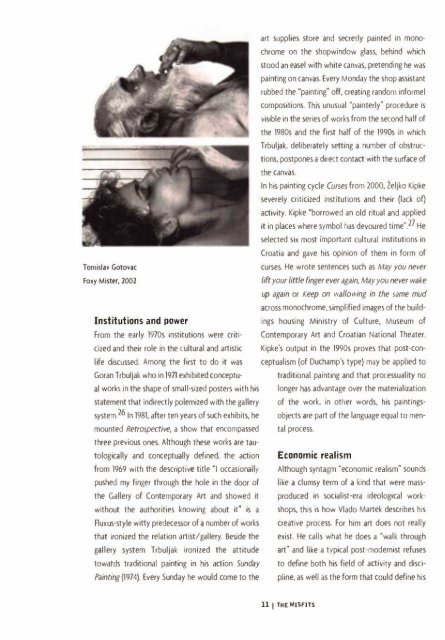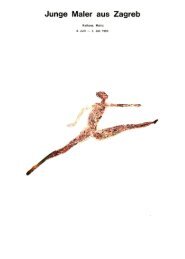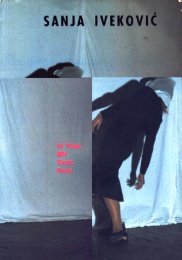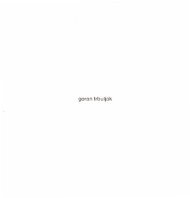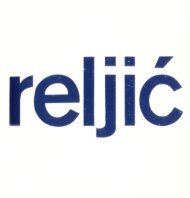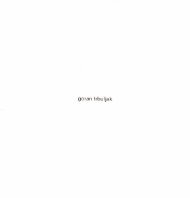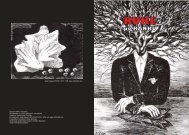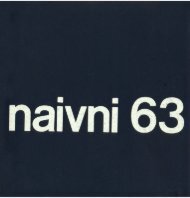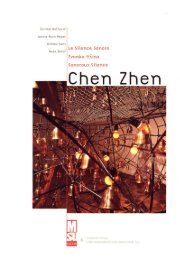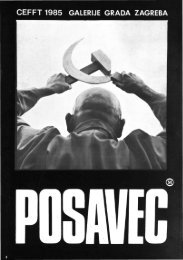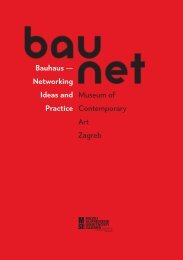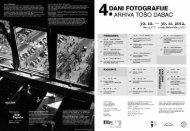The Misfits.pdf - Muzej suvremene umjetnosti Zagreb
The Misfits.pdf - Muzej suvremene umjetnosti Zagreb
The Misfits.pdf - Muzej suvremene umjetnosti Zagreb
You also want an ePaper? Increase the reach of your titles
YUMPU automatically turns print PDFs into web optimized ePapers that Google loves.
Tomislav Gotovac<br />
Foxy Mister, 2002<br />
Institutions and power<br />
From the early 1970s institutions were criti-<br />
cized and their role in the cultural and artistic<br />
life discussed. Among the first to do it was<br />
Goran Trbuljak who in 1971 exhibited conceptu-<br />
al works in the shape of small-sized posters with his<br />
statement that indirectly polemized with the gallery<br />
system.26 In 1981, after ten years of such exhibits, he<br />
mounted Retrospective, a show that encompassed<br />
three previous ones. Although these works are tau-<br />
tologically and conceptually defined, the action<br />
from 1969 with the descriptive title "I occasionally<br />
pushed my finger through the hole in the door of<br />
the Gallery of Contemporary Art and showed it<br />
without the authorities knowing about it" is a<br />
Fluxus-style witty predecessor of a number of works<br />
that ironized the relation artist/gallery. Beside the<br />
gallery system Trbuljak ironized the attitude<br />
towards traditional painting in his action Sunday<br />
Painting (1974). Every Sunday he would come to the<br />
art supplies store and secretly painted in mono-<br />
chrome on the shopwindow glass, behind which<br />
stood an easel with white canvas, pretending he was<br />
painting on canvas. Every Monday the shop assistant<br />
rubbed the "painting" off, creating random informel<br />
compositions. This unusual "painterly" procedure is<br />
visible in the series of works from the second half of<br />
the 1980s and the first half of the 1990s in which<br />
Trbuljak, deliberately setting a number of obstruc-<br />
tions, postpones a direct contact with the surface of<br />
the canvas.<br />
In his painting cycle Curses from 2000, eljko Kipke<br />
severely criticized institutions and their (lack of)<br />
activity. Kipke "borrowed an old ritual and applied<br />
it in places where symbol has devoured time".27 He<br />
selected six most important cultural institutions in<br />
Croatia and gave his opinion of them in form of<br />
curses. He wrote sentences such as May you never<br />
lift your little finger ever again. May you never wake<br />
up again or Keep on wallowing in the same mud<br />
across monochrome, simplified images of the build-<br />
ings housing Ministry of Culture, Museum of<br />
Contemporary Art and Croatian National <strong>The</strong>ater.<br />
Kipke's output in the 1990s proves that post-con-<br />
ceptualism (of Duchamp's type) may be applied to<br />
traditional painting and that processuality no<br />
longer has advantage over the materialization<br />
of the work, in other words, his paintings-<br />
objects are part of the language equal to men-<br />
tal process.<br />
Economic realism<br />
Although syntagm -economic realism sounds<br />
like a clumsy term of a kind that were mass-<br />
produced in socialist-era ideological work-<br />
shops, this is how Vlado Martek describes his<br />
creative process. For him art does not really<br />
exist. He calls what he does a "walk through<br />
art" and like a typical post-modernist refuses<br />
to define both his field of activity and disci-<br />
pline. as well as the form that could define his<br />
11 I THE MISFITS


